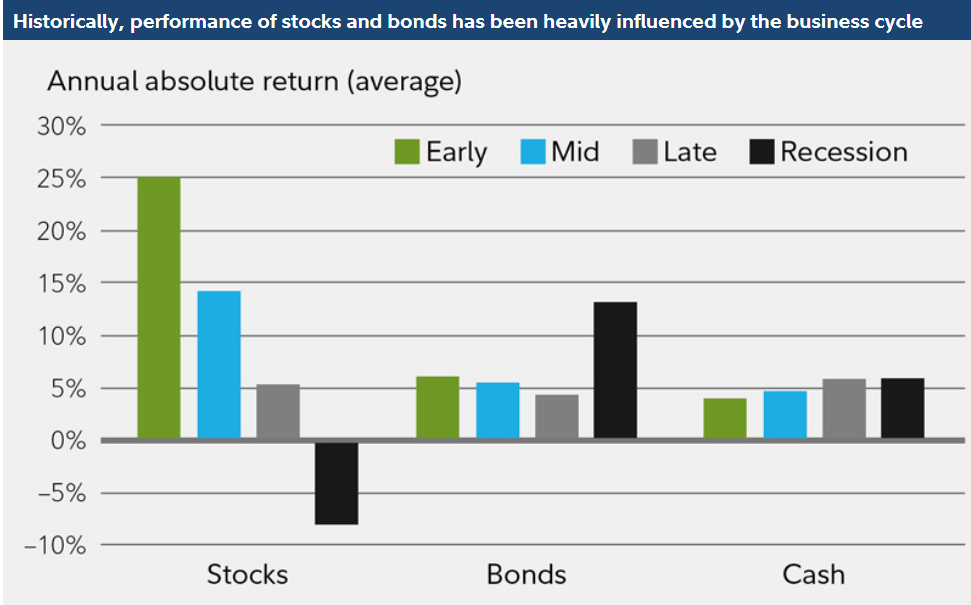Situational Awareness
Lesson 3
The business cycle (also called the economic cycle) moves through four distinct stages, or phases: Early, Mid, Late, and Recession. This image from Fidelity shows how various asset classes perform during each of the cycle stages.
Stocks perform best in the early stages of the cycle, as the economy is recovering from a recession. As the cycle moves into its mid stage, stocks lose a little steam but still offer above-average returns.
In the late stage of the cycle, economic growth begins to slow, and stocks underperform their long-term averages as investors begin to anticipate the next recession.
During the recession stage, stocks become the worst performing asset class, while investors flee to the relative safety of bonds. The combination of money flowing in and interest rates coming down makes bonds the best bet during a recession.
Early stage outperformers
Stocks that benefit most from low interest rates—such as those of companies in the consumer discretionary, financials, and real estate industries—have outperformed. Consumer discretionary stocks have beaten the broader market in every early cycle since 1962.
Industries such as financials, autos, and household durables have also been strong early cycle performers. High-yield corporate bonds have also averaged strong annual gains during the early cycle.
Mid stage outperformers
Information technology stocks have been the best performers during this phase, with semiconductor and hardware stocks typically picking up momentum once companies gain confidence in the recovery and begin to spend capital.
Late stage outperformers
Energy and utility stocks have done well as inflation rises and demand continues. Cash has also tended to outperform bonds, but investors should be cautious about making changes to their asset allocation in pursuit of opportunities during the late cycle.
Recession outperformers
As growth contracts, stocks that are sensitive to the health of the economy lose favor, and defensive ones perform better. These include stocks of companies that produce items such as toothpaste, electricity, and prescription drugs, which consumers are less likely to cut back on during a recession. In a contracting economy, these companies’ profits are likely to be more stable than those of others.
High dividends paid by utility and health care companies have helped their stocks during recessions.
Identifying key phases in the economy and looking at how investments have performed in those phases in the past offers investors guidance as they set expectations for their portfolios.

